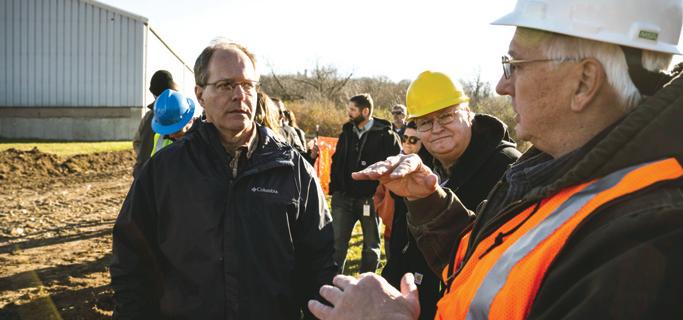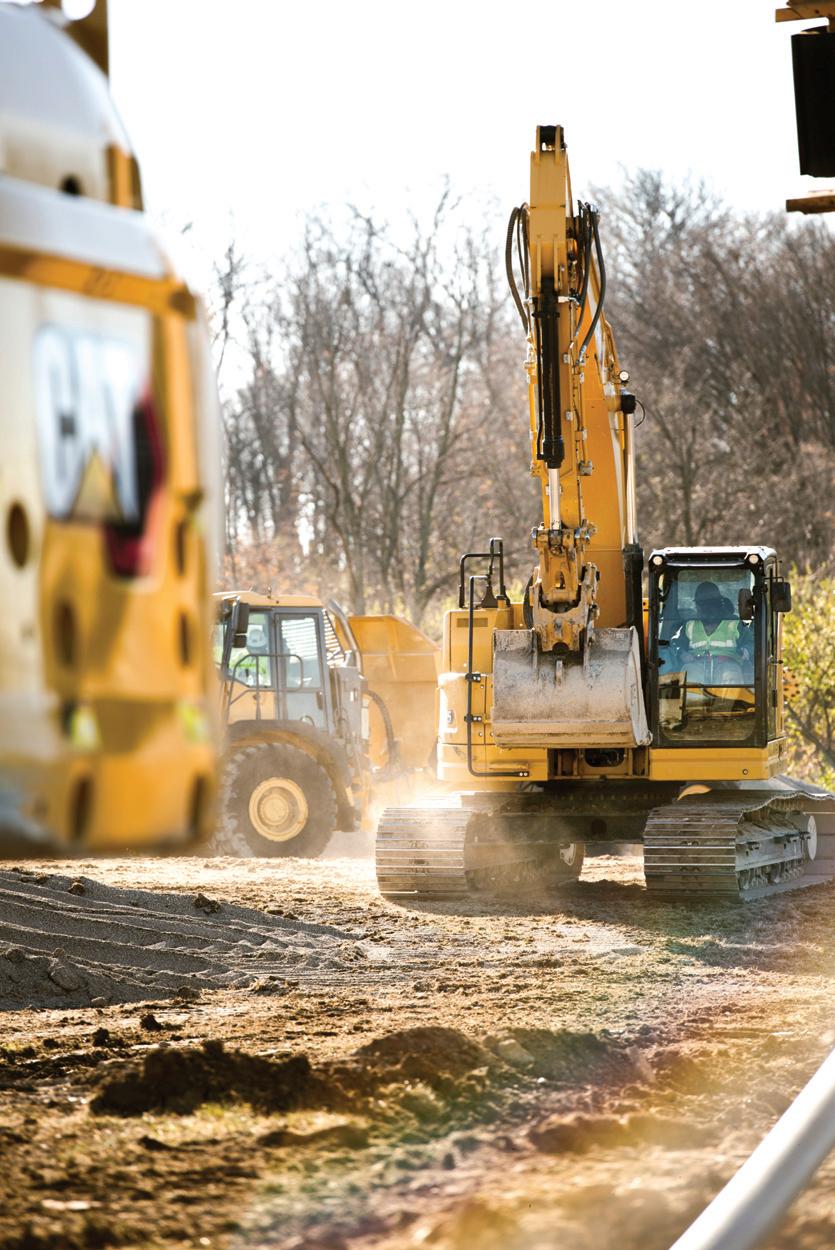
1 minute read
Groundwater-Capture Trench to Aid Response
By Caroline Clauson 88TH AIR BASE WING PUBLIC AFFAIRS

One line of effort is being set in stone, clay and gravel at WrightPatterson Air Force Base (WPAFB), where an army of construction workers and machines are digging a 420-ft.long trench toward a way to environmental progress.


The project targets the hazardous materials storage facility on Area B, which accidently released a firefighting agent called aqueous film-forming foam (AFFF) containing per- and polyfluoroalkyl substances (PFAS) on two occasions in 2008 and 2011. Officials said the fire-suppression system at this facility used an earlier version of AFFF before EPA identified PFAS for possible health risks. The released AFFF soaked into the soil and entered the ground and surface water near the site.
The constructed trench will intercept impacted groundwater, and a downgradient-collection basin will catch affect- ed surface water so it can be treated before it’s discharged near the Dayton drinking water wellfield.
The 2-ft.-wide trench extends about 30 ft. below ground surface, reaching all the way down to bedrock, according to Ed Coggin, technical director of the water engineering group at Weston Solutions LLC, the contractor awarded the project in 2021 as part of the U.S. Army Corps of Engineers’ Rapid Response Program.
As groundwater seeps out the trench’s sides, gravity will pull it down through the gravel fill material and into a slotted pipe, preventing groundwater from migrating further from the site. Next, the collection pipe will convey the water to a sump at the trench’s low point. Finally, a pump installed in the sump will send 15 to 25 gal. of water per minute to the downgradient-treatment system, which will use a special type of organically engineered clay to filter out PFAS.
TRENCH page 4




